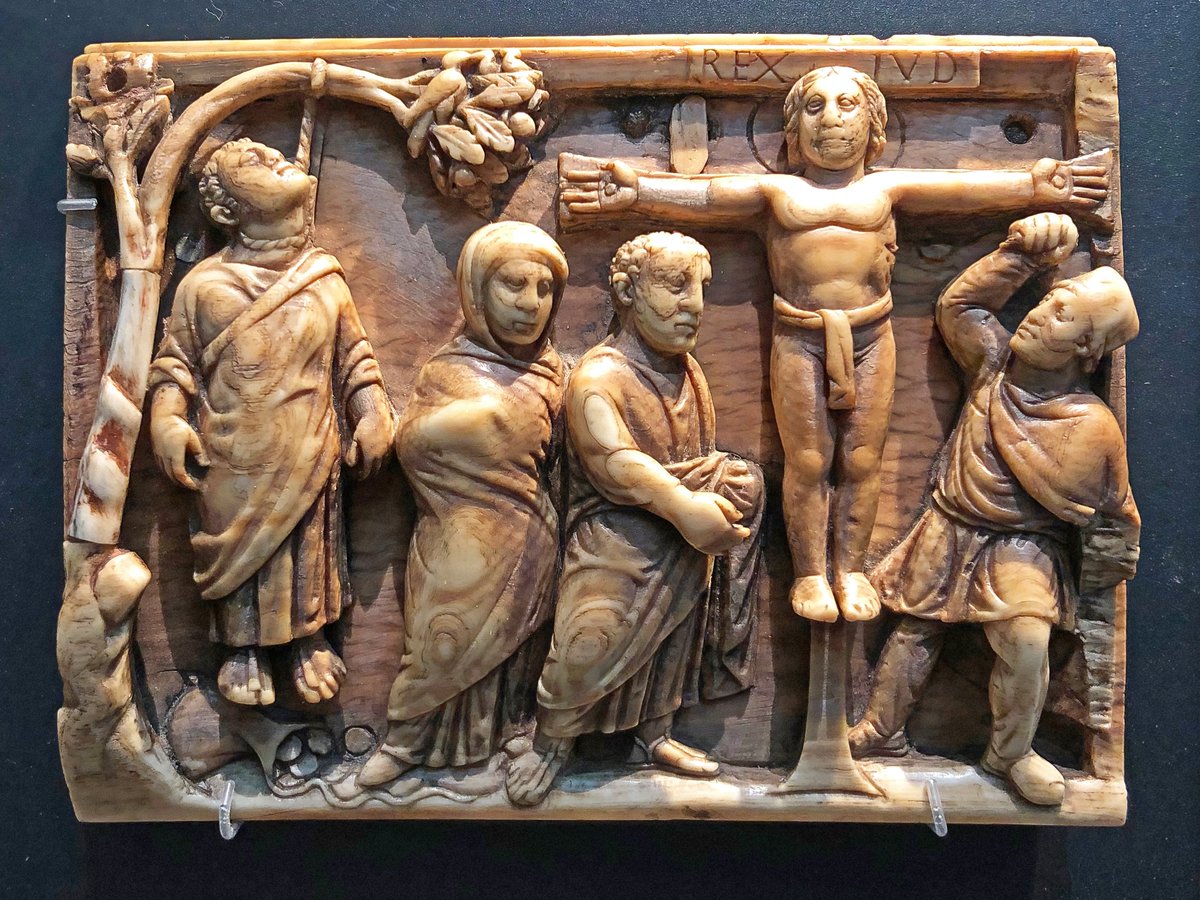
1/4) Four sides of an ancient ivory casket, with some of the earliest known depictions of Christ's crucifixion and resurrection (early 400s AD); in the first panel the Roman governor Pontius Pilate condemns Christ who carries the cross to his place of execution... 

2/4) The second ivory panel shows Judas committing suicide by hanging after betraying Christ, followed by the crucifixion. Above Christ the Romans have hung a sign saying REX IVD[aeorum] - “King of the Jews”. 

3/4) In the third panel, Christ's empty tomb lies open. The date of the ivory casket is reflected in the late-antique architectural style of the tomb. 

4/4) The final scene shows Christ resurrected among his apostles. The four ivory panels formed a casket that probably held consecrated bread for use in early-Christian mass. British Museum 

• • •
Missing some Tweet in this thread? You can try to
force a refresh























